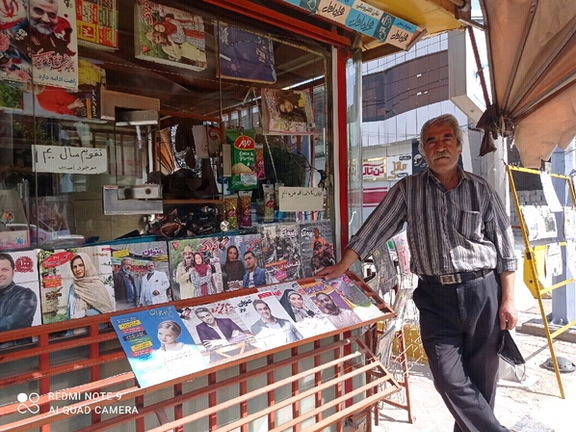The Dire State of Press Freedom in Iran

Iran continues to solidify its position as one of the most oppressive regimes for press freedom, with recent reports shedding light on the increasing challenges faced by the media in the country.

Iran continues to solidify its position as one of the most oppressive regimes for press freedom, with recent reports shedding light on the increasing challenges faced by the media in the country.
A report published Friday by the Organization for the Defense of Free Flow of Information (DeFFI) highlights a surge in repression against journalists during April 2024. Documenting 44 new cases filed against journalists by Iranian state authorities, with updates on 49 existing cases, the report underscores a systematic effort by the authorities to silence dissenting voices. This surge in repression coincides with recent events including tensions with Israel and heightened enforcement of hijab regulations on women.
Earlier Friday, Reporters Without Borders (RSF) placed Iran at 176th rank out of the 180 countries assessed, in its 2024 World Press Freedom Index, placing the country below China and just ahead of North Korea.
Speaking on the matter at the Nobel Peace Center's event on World Press Freedom Day Friday, Nahid Persson Sarvestani, Swedish-Iranian filmmaker, likened Iran to "a big prison for everybody, especially for journalists," additionally emphasizing the challenges faced by citizen journalists like Ghazaleh Chalabi, who was shot and killed by state security forces while filming protests in 2022. She added that the risks extend beyond Iran's borders, as exemplified by the case of Pouria Zeraati who was stabbed outside his London home recently.
In another report from the Midpoint School of Journalism, extensive repression against Iranian journalists over the past year is detailed. Documenting over 226 cases, the report highlights various forms of persecution, including arbitrary summons, arrests, physical assaults, and security threats. These incidents often targeted journalists covering contentious issues such as women's rights, economic struggles, and significant security incidents.
The involvement of security institutions, government agencies, and the judiciary in pressuring and threatening journalists is evident. Instances of pressure extend beyond Iran's borders, with allegations of targeting journalists abroad, including assassination plots.
Overall, these reports paint a grim picture of the challenges faced by journalists in Iran and the lengths to which authorities go to suppress dissent and control information.
Amidst the release of these reports coincided with World Press Freedom Day, US Department of State’s official Persian language X page paid tribute to Iranian journalists in Iran facing governmental pressures including Nilufar Hamedi, Elaheh Mohammadi, and Nazila Maroufian, applauding them for their bravery in reporting under difficult circumstances.
Paradoxically, the Spanish, Romanian, and Slovenian embassies in Iran, shared a message on their X pages for World Press Freedom Day, claiming to “honor journalists and media workers who report the truth, often at their own risk". Notably absent from their message were references to the arrests, bans, media outlet closures, and other forms of persecution faced by journalists in Iran.